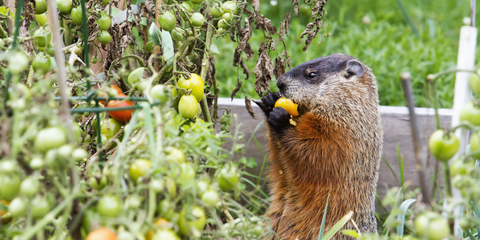As a dedicated gardener, your raised garden beds are a source of pride and joy. However, these lush oases can often become targets for critters seeking a free meal. Protecting your raised garden beds from these curious and hungry creatures requires a strategic approach that balances your love for nature with the need to safeguard your hard work. In this comprehensive blog post, we will delve into the world of critter prevention, offering you a toolkit of tips, tricks, and strategies to keep unwanted visitors at bay and ensure your garden thrives undisturbed.The following content also has some reference value for raised garden beds.

Understanding the Critter Challenge: Common Garden Pests
Before we dive into prevention methods, it's essential to familiarize yourself with the types of critters that might pose a threat to your raised garden beds:
- Rodents: Rats, mice, and squirrels can wreak havoc by digging up seeds, munching on young plants, and even nibbling on mature produce.
- Insects: Aphids, caterpillars, and beetles are notorious for damaging leaves, stems, and fruits, affecting the overall health of your plants.
- Birds: Sparrows, pigeons, and crows can feast on seeds, fruits, and young shoots, often leaving a trail of destruction.
- Deer and Rabbits: These larger animals can cause significant damage by grazing on plants and even jumping into raised beds.
Protecting Your Raised Garden Beds: Proven Tips and Strategies

- Fencing: Your First Line of Defense
Erecting a sturdy fence around your raised beds is one of the most effective ways to deter critters. Opt for materials like chicken wire or hardware cloth with small openings to prevent smaller animals from squeezing through.
- Elevated Beds: Out of Reach
Raised beds are already elevated, but you can further deter critters by elevating them higher. This works particularly well for deer and rabbits, making it difficult for them to access the plants.
- Natural Predators: Encourage Friendly Visitors
Attract natural predators such as birds, beneficial insects, and even snakes to your garden. These predators can help keep pest populations in check.
- Repellents: Distasteful Garden Buffet
Utilize scent-based repellents like garlic spray, cayenne pepper, or even predator urine (available in stores) to create an unappealing environment for critters.
- Companion Planting: Nature's Harmony
Integrate companion planting techniques that naturally deter pests. For instance, planting marigolds alongside vegetables can repel aphids and other insects.
- Row Covers and Netting: Physical Barriers
Cover your raised beds with lightweight row covers or netting to create a physical barrier that keeps critters away while still allowing sunlight and moisture to reach your plants.
- Motion-Activated Devices: Startling Solutions
Install motion-activated devices like sprinklers or noise emitters that startle critters when they approach your garden beds.
- Nighttime Protection: Dark Disguise
Covering your raised beds with tarps or blankets at night can prevent nocturnal critters from feasting on your plants.
- Homemade Traps: Safe Capture
Create humane traps to catch smaller critters like mice and squirrels, allowing you to release them away from your garden.
- Regular Inspection: Early Intervention
Regularly inspect your garden beds for signs of critter damage. Early intervention can prevent a small issue from turning into a full-blown infestation.

Critter-Specific Strategies: Tailored Approaches
- Deer and Rabbits
Use tall fencing (at least 8 feet) to keep these larger animals out. Plant strong-smelling herbs like lavender, thyme, and mint around your raised beds to deter them.
- Insects
Introduce beneficial insects like ladybugs and lacewings that feed on common garden pests. Neem oil or insecticidal soap can also be used for targeted pest control.
- Rodents
Set up traps and bait stations in areas frequented by rodents. Seal any openings or gaps in fencing or structures that rodents could use to access your garden.
- Birds
Drape bird netting over your raised beds to prevent birds from reaching your plants. Hang shiny objects like CDs or aluminum foil strips to create visual deterrents.
Garden Maintenance: Nurturing a Critter-Resistant Haven
- Keep Your Garden Clean
Regularly remove fallen leaves, debris, and overripe fruits. These can attract critters and provide hiding spots for pests.
- Prune and Trim
Trim overhanging branches and foliage to eliminate potential pathways for critters to access your garden.
- Healthy Soil and Plants
Maintain healthy soil and plants through proper watering, fertilization, and disease management. Strong, healthy plants are more resilient to pest attacks.
- Rotate Crops
Rotate the crops you plant in your raised beds each season. This disrupts the life cycles of pests that target specific plants.
Conclusion
Creating a critter-resistant haven for your raised garden beds requires a combination of strategies, vigilance, and a touch of creativity. By integrating fencing, natural predators, repellents, and other protective measures, you can strike a balance between nature and your gardening ambitions. With a keen eye and a commitment to garden maintenance, you'll be able to savor the beauty and abundance of your raised beds while keeping critters at bay. As you fortify your garden against these intruders, remember that your efforts not only protect your harvest but also ensure that your garden remains a flourishing sanctuary for you to enjoy for years to come.









